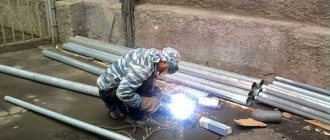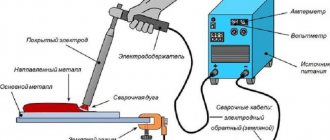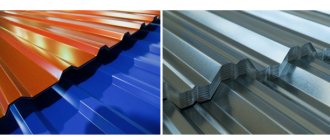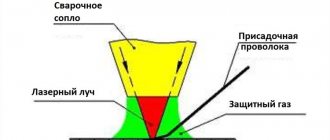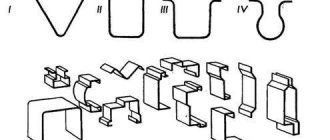— Pre-treatment baths with an exhaust system - a completely enclosed pre-treatment department housing.
— Manual cranes, overhead hoists and closed circuit galvanizing cycle with clutch cranes and rotary tables.
— Hoists specially designed to work in a closed housing in an acidic environment, and a galvanizing process with a fully automatic operating system according to pre-selected “recipes.”
— Pit and tunnel dryers with step-by-step chain conveyor movement of traverses.
— Flat-flame and high-speed furnaces with the possibility of using dual fuel and with a heat recovery device.
— Zinc pumps, dross grab, ash removal, zinc surface cleaning devices.
— Galvanized faucet with a suspended closed body and a system for complete extraction of white fumes.
— Automatic cooling and passivation devices.
— Cumulative buffer racks for chain and step-by-step movement of traverses.
— Floor-mounted transport trolleys with automatic traverse feeding device.
— Devices for loading and unloading material.
— Logistics areas with fully automatic double cranes and gantry cranes for automatic distribution of empty and loaded cross beams.
— Monitoring software and computers for complete control and organization of production.
Pipe galvanizing lines
— Full automatic galvanization of pipes.
— Automatic galvanizing based on “recipes” and controlled by a local and remote computer.
— Extremely limited intervention by operators only for changing the sizes of the internal and external purge rings.
— Just 3 operators can produce up to 1,100 pipes or 25 tons of pipes per hour.
— The equipment is suitable for pipes with a length of 4 to 9.5 meters.
— Semi-automatic lines with operator support for square and rectangular pipes.
Features of the galvanizing procedure and the main methods of metal protection
Metal corrosion, or the process of its oxidation, is especially intensified in conditions of high humidity. To prevent corrosion of metal products, protective coatings are applied to them. Galvanizing of metal is considered one of the most reliable, since zinc takes on the effects of aggressive environments. Galvanizing provides not only barrier, but also electrochemical protection of the metal. During the reaction, an oxide layer appears on the surface of the part, which provides additional protection.
After mechanical destruction of the coating, the effect of the protective layer ceases. There are various types of metal galvanizing, many of them require complex and expensive equipment, but some can also be used at home.
Galvanized pipes
Galvanizing technology was first mastered in France in the 18th century and further developed in England. Domestic scientists Jacobi and Mendeleev made a great contribution to improving the process. Today, galvanizing metal is one of the most affordable ways to protect against corrosion.
GALVANIZED
— Up to an outer diameter of 4”, two pipes are processed simultaneously.
— Pipes with a diameter of more than 4” are processed one at a time.
— When processing one or two pipes, all pipes exit from the same side.
— Internal pipe blowing can be done both horizontally and at an angle.
— The immersion unit is replaceable for quickly changing pipe sizes.
- The same screws are suitable for driving pipes with diameters from 2" to 3/8" to avoid screw replacement.
Centrifuge hot dip galvanizing lines
Manual and automatic galvanizing using a centrifuge
- Manual type with "Monorail cycle"
- Automatic robot top centrifuge 40 baskets per hour
- Automatic robot top centrifuge 80 baskets per hour
Innovative high-performance and high-quality galvanizing plant using a centrifuge.
Net productivity up to 4 tons per hour.
100% zinc return directly above the mirror surface without operator intervention to clean it.
Very important zinc saving.
Drum filling device and feed conveyors.
Closed pre-treatment tunnel with automatic double gantry valve operating according to the entered “recipe”.
Drum unloading and material moving conveyor.
Belt dryer.
Fully automatic processes of material weighing, basket filling, immersion, zinc surface cleaning, zinc exit.
Ceramic oven with top heating.
Software for adjustment and monitoring of an automatic transport system.
Expert advice
To carry out high-quality galvanizing, the following recommendations must be followed:
- Before applying the layer, the surface must be treated - remove rust and then degrease. The more detailed the surface, the better the coating will lie.
- If the method with electrodes is used, it is advisable to buy wires in advance to connect to the battery - the standard ones from the kit are quite short, just enough.
- The cold coating procedure must be carried out at temperatures from -10 to +40 ℃.
- If the car owner used rust destroyers to treat the body, then it is advisable to wipe the part with a solution of soda and water - this will remove excess chemical liquid from the body.
- The bath must be resistant to acid - otherwise the liquid will corrode the container and the solution will leak out.
- To melt the zinc, the material is placed in sulfuric acid, which is sold at any auto store. For a liter of special liquid you need 400 grams. metal
- When working with acid, you need to use skin and eye protection - goggles, long sleeves and gloves.
- It is important to make sure that the zinc has dissolved in the acid and the reaction has begun - add an extra piece. If no bubbles appear, the liquid is ready.
- The wire connected to the battery must not come into contact with the solutions included in the kit. If this happens, an unnecessary reaction will occur - the set will have to be thrown away and started all over again.
- In a situation where the paint on a problem area is swollen, the area must be removed by carefully going over the body with a wire brush.
If you follow safety precautions and rules of use, the operation will not take more than an hour, the device for galvanizing the car body will complete the task, and the vehicle will be reliably protected from corrosion.
Factories that do not pollute the environment
- Fully detailed and clear documentation on environmental impact.
- Acid-resistant foundation protection using PVC or propylene coating.
- Oil separation unit for degreasing and pickling solutions.
- Acid regeneration plant using sulfuric acid as a reagent.
- Installation of acid regeneration by concentration of hydrochloric acid.
- Units for computerized automatic measurements of liquids.
- Acid-resistant containers with solution distribution stations.
- Flux regeneration unit.
- Degreaser dosing and diluting device.
- Flux dosing and dilution device.
- Bag filter for white fumes.
Galvanizing methods
Metalworking specialists distinguish the following methods for applying zinc coatings to metals:
- hot;
- cold;
- electrochemical, or galvanic;
- gas-thermal;
- thermal diffusion.
The application method is selected based on the following criteria:
- conditions for using the part;
- thickness of the protective layer;
- durability;
- special protection requirements.
The thickness of the layer is determined by the time the part is in the working environment and the temperature in the working area. When designing a technological process, it should be borne in mind that mechanical processing after coating the part with zinc will destroy the protective layer.
Hot galvanizing
This method is distinguished by the high quality of the resulting metal coating. However, its distribution is limited by the following disadvantages:
- complex and energy-intensive equipment;
- high temperatures;
- extremely harmful production waste;
- the size of the processed products is limited by the dimensions of the zinc bath.
First, a block of preparatory operations is performed:
- mechanical cleaning;
- degreasing;
- etching in an acidic environment;
- washing and flux treatment;
- drying.
Hot galvanizing
Only after this does the actual galvanizing begin. The prepared parts are lowered into a bath of molten zinc. A thin layer consisting of Fe and Zn compounds appears on their surface. Next, the parts are taken out of the bath and blown with air under high pressure. This allows you to remove excess zinc and at the same time dries the part.
Due to the complexity of the process and harmful working conditions, it is not used at home.
Cold galvanizing
This method is technologically much simpler. It can be reproduced at home. A layer of zinc-containing substance is applied to the workpiece using a brush or roller. To protect workpieces of particularly complex shapes and topography, spray guns are used. Compositions for cold galvanizing of metal are polymer solutions based on fine-grained zinc powder. The most commonly used is zinconol, which creates a corrosion-protecting layer on the surface with a 90% Zn content.
Cold galvanizing is also used in industry to protect already assembled parts and structures - for example, power line supports.
Cold galvanizing
The method is also used to restore partially damaged anti-corrosion coatings, for example, as a result of wear or repair work.
The disadvantage of this method of coating metal with zinc is the low mechanical strength of the coating.
Galvanic method
The electrochemical method allows you to obtain a durable and smooth layer. During the process, you can control the thickness of the applied metal layer. The quality very much depends on the degree of degreasing of the workpiece.
Galvanization of parts occurs as follows. Protected workpieces and zinc plates - donors are lowered into a bath of electrolyte, and voltage is applied to them. The current flowing in the resulting circuit, using the phenomenon of electrochemical metal transfer, pulls zinc atoms from the plates and deposits them on the workpieces.
Galvanic galvanizing
The disadvantages of the method are the high cost, which consists of the cost of plates, electrolyte and electricity. In addition, you will have to incur high costs for decontamination of the spent electrolyte.
Thermal diffusion galvanizing
The technology was developed in the early 19th century, but only recently gained widespread popularity. The workpieces to be protected are placed in a sealed container, into which dry powder containing zinc is added. Next, the container is heated to high temperatures (400-900 °C). The zinc evaporates and its vapors are deposited on the surface of the product. Preparation of workpieces is carried out in the same way as in the case of hot-dip galvanizing.
The advantages of this method are as follows:
- low environmental hazard;
- low porosity;
- high mechanical and anti-corrosion resistance (several times higher than with the galvanic method);
- there is no need for waste disposal.
Thermal diffusion galvanizing
The disadvantages include:
- the coating turns out dull, gray and does not decorate the product;
- low productivity;
- harmful working conditions.
The uniformity of the thickness of the zinc coating layer also leaves much to be desired.
Gas thermal spraying of zinc
The method is used for processing large-sized products, steel sheets, etc. Zinc is transferred to the prepared surface of the workpiece by a jet of burning gas. A zinc wire is placed in the flame of a gas burner, it melts and droplets of metal fall on the workpiece, forming a scale-like layer on it.
Gas thermal galvanizing
The method is used in combination with the application of anti-corrosion paints and varnishes and is very effective for protecting the hulls of sea vessels and coastal structures.

